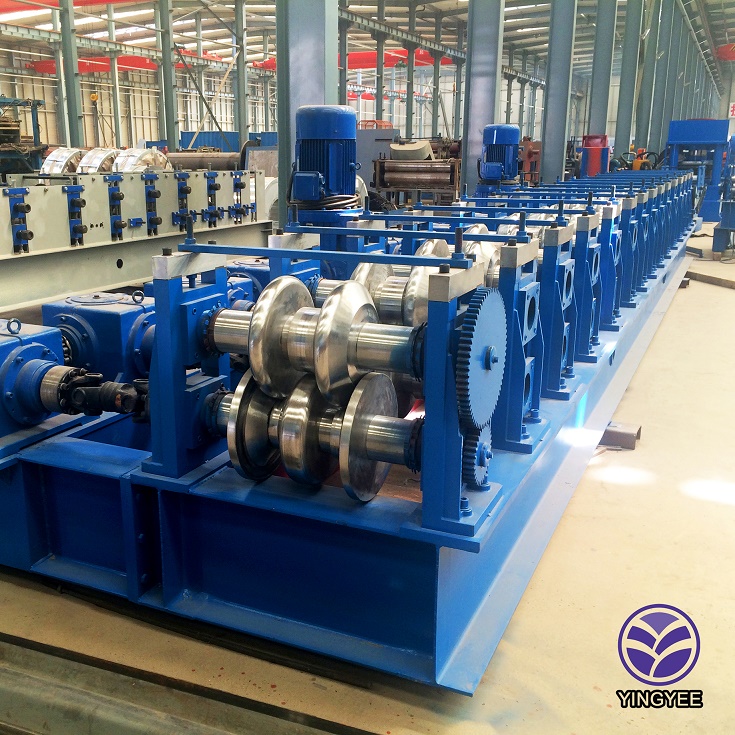
Understanding Purlin Rolling Machines An Essential Tool in Construction
Purlin rolling machines have become a vital piece of equipment in the construction industry, where the demand for high-quality building materials is ever-increasing. These machines are specifically designed to produce purlins—horizontal members used to support roofing and wall cladding in various types of structures, including warehouses, factories, and agricultural buildings. In this article, we will explore the functionality, benefits, and significance of purlin rolling machines in modern construction.
What is a Purlin Rolling Machine?
A purlin rolling machine is a type of forming equipment that shapes metal sheets into purlins through a continuous roll forming process. The machine takes flat metal strips, usually made from steel or aluminum, and gradually molds them into the desired shape while ensuring consistent accuracy and high strength. The finished products are crucial for supporting roofs and providing structural integrity to buildings.
How Does a Purlin Rolling Machine Work?
The operation of a purlin rolling machine involves several key steps
1. Material Preparation The process begins with the selection of the right raw material, typically cold-rolled or hot-rolled steel. The metal sheets are cut to the required size before feeding them into the machine.
2. Feeding The metal strips are fed into the roller system, where they are precisely controlled to ensure they remain aligned throughout the rolling process.
3. Forming The machine consists of multiple rollers that gradually shape the metal into the desired profile. Each pair of rollers is responsible for a specific part of the forming process, bending the metal to achieve the required cross-section.
5. Quality Control Finished purlins undergo inspection to ensure they meet quality standards. This may include checking dimensions, strength, and surface finish.

Benefits of Using Purlin Rolling Machines
Investing in a purlin rolling machine offers numerous advantages for construction companies
1. Cost Efficiency Producing purlins in-house can significantly reduce material costs, as companies can source raw materials at lower prices and avoid outsourcing.
2. Customization Purlin rolling machines can quickly adapt to different specifications, allowing for custom shapes and sizes tailored to individual project requirements.
3. High Production Speed These machines operate at high speeds, enabling large volumes of purlins to be produced in a short timeframe. This rapid production capability is essential in meeting tight project deadlines.
4. Consistency and Quality Automated processes minimize human error, ensuring that each purlin produced is consistent in quality and meets structural standards.
5. Versatility Purlin rolling machines can create various profiles, including C, Z, and U-shaped purlins, making them suitable for a wide range of applications across different industries.
Importance in Modern Construction
As construction techniques continue to evolve, the role of purlin rolling machines becomes increasingly significant. With a growing emphasis on efficiency, sustainability, and structural integrity, these machines offer a practical solution to meet modern construction demands. Moreover, they facilitate the use of lightweight yet durable materials, contributing to the overall sustainability of building practices.
In conclusion, purlin rolling machines are indispensable tools in the construction industry. Their capability to produce high-quality, customized purlins efficiently makes them an essential investment for any construction business looking to enhance productivity and reduce costs. As the industry advances, the importance of these machines will only continue to grow, supporting the development of safer, more robust, and environmentally friendly structures.